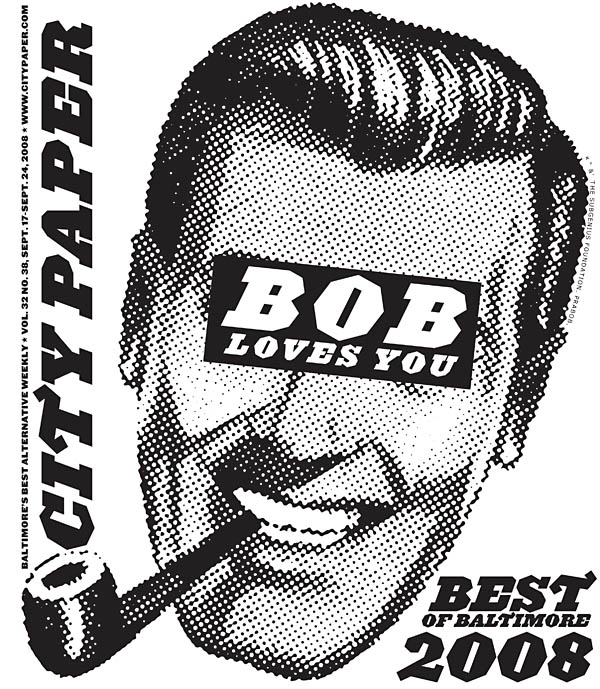For City Paper
Within our small arts community, we are excited when we get to cheer on hard-working, talented individuals who make Baltimore a diverse and vibrant city. Annual art awards and an exciting DIY art scene provide regular opportunities to look in on the new, host the traveling, or experience the fleeting with enthusiasm and camaraderie. There is, however, a special kind of love reserved for those mid-career artists who have given their lives to Baltimore, contributing tirelessly to its intellectual and artistic landscape. Painter and Maryland Institute College of Art professor Timothy App has earned this sort of reverence through a consistent artistic and academic career, devotion to his students and community, and producing impressive bodies of work that continue to develop within the confines of the canvas and his super-flat, glazed surfaces.
Threshold, App’s current solo exhibition at Goya Contemporary, enjoyed a crowded and successful opening, as anticipated, but is undoubtedly best as a solitary viewing experience. Consisting of eight new, large-scale paintings and a handful of works on paper, Threshold is a quiet, meditative exhibition that forgoes the acute angles of his recent paintings in favor of rectangular forms and a comfortable symmetry. App’s subtle hues of muted grays, greens, and muffled purples hug expansive, central planes of black and white, which the artist refers to as “portals.” This description is fitting, as the layering and perspective appear to shift as viewers stand before them. These slight vibrations recall Mark Rothko, and the obsessively neat surfaces find company with finish-fetish artists like John McCracken.
In the canvas paintings, the compositions fit together like pieces of a puzzle. Each colored plane ends with a crisp lip where tape helped dam the layers of paint in their working stages. Slight shadows cast by these ridges play a visual trickery on some viewers, making them believe the paintings contain collaged elements, neatly adhered into their perfect geometry. App’s laborious selection of color shades, a quality of his work best appreciated in person, gives each painting a transparent and mysterious quality. Like Ad Reinhardt’s black paintings made up of subtle variations of color, App’s ambiguous grays and tans at the edge of the compositions look like raw linens upon first glance, but are actually subtle hues painted on canvas. The thin evenness of App’s glazing technique allows the texture of the fabric to come through.
Goya Contemporary Director Amy Eva Raehse explains that these new works are in dialogue with a number of App’s older series, including the homage paintings and vessels, which the artist recently revisited in preparation for a 2013 retrospective at the Katzen Museum in Washington, D.C. His oeuvre of the past decade shows small shifts in his formalist rigor, a fixation on parallel lines and rectangular forms bending into triangles and angular arrangements. In some works, rounded arcs swoop through otherwise hard-edged arrangements. After re-examining and documenting the older works for the forthcoming catalog that will accompany the Katzen exhibition, App picked up old threads in his work to create the new series. Compositions once again soften into right angles embodying the simultaneous language of a contemporary computer screen, with window-like layering and a modernist sensibility. Emanating a soft, central glow through the play of paint color, many of the pieces seem to refer to digital screens, stages, and Hiroshi Sugimoto’s long-exposure photographs of movie theaters. In particular, “Agora” and “Proscenium” most resemble monolithic projector televisions, with white, squarish planes resting on narrower black rectangles. The suggestion that these screens are off, the stage empty, adds a clever narrative to these otherwise abstract works: the contemporary substitute for meditation and tranquility versus the tranquility that can be achieved through painting.
In its title, Threshold conveys the spiritual and transportive nature of these new works, which are deceptive in their simple compositions. An intangible space opens up in the picture planes, existing for brief moments between colors and shapes and the slight translucence of the acrylic. From a distance it becomes hard to imagine that these works have a human creator, but this illusion dissolves with closer inspection. Slight imperfections, be they small areas of color inconsistency or minute wavers of a line, firmly root these works in the hand and the painting process. While the pieces in Threshold are more pared down than previous series in App’s career, both in composition and color variety, the end results are no less complex.








